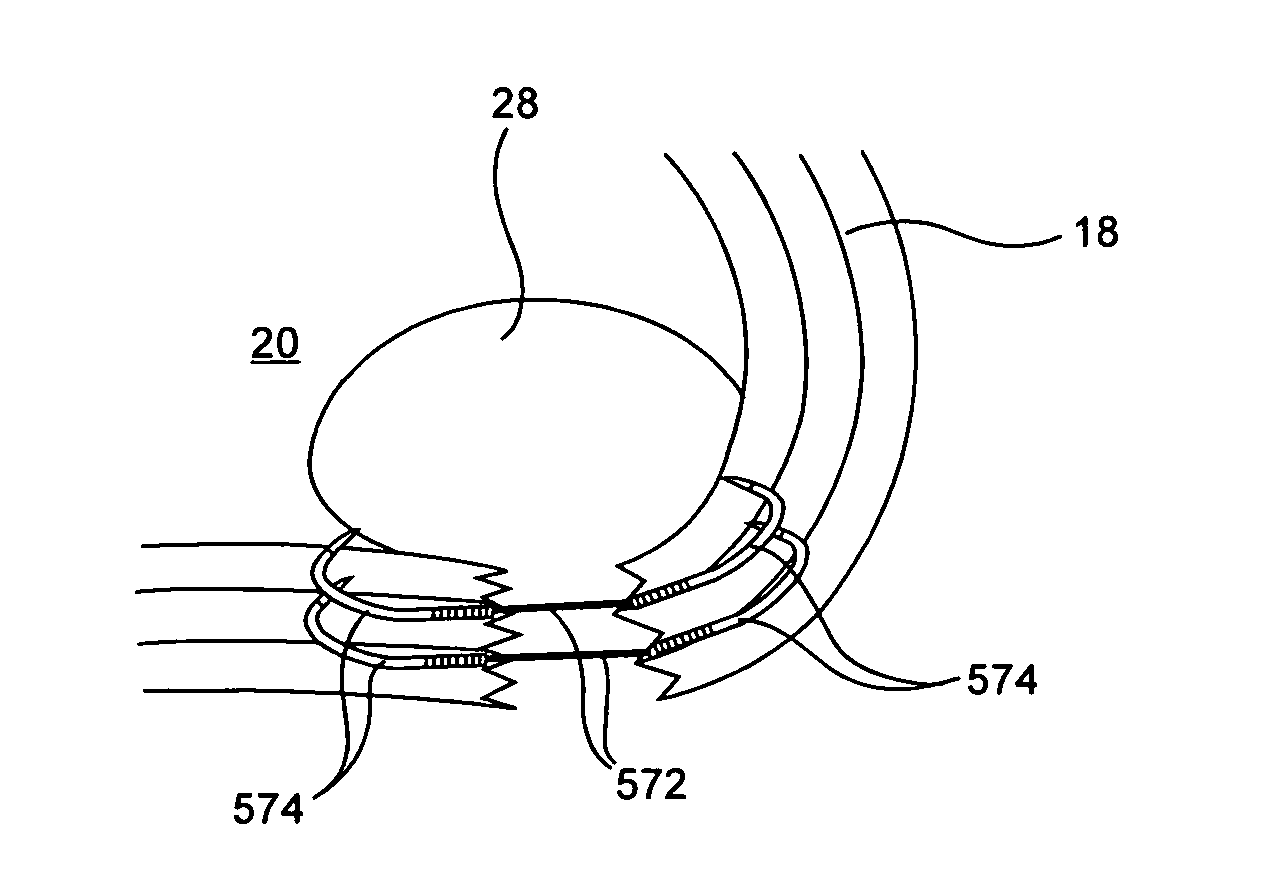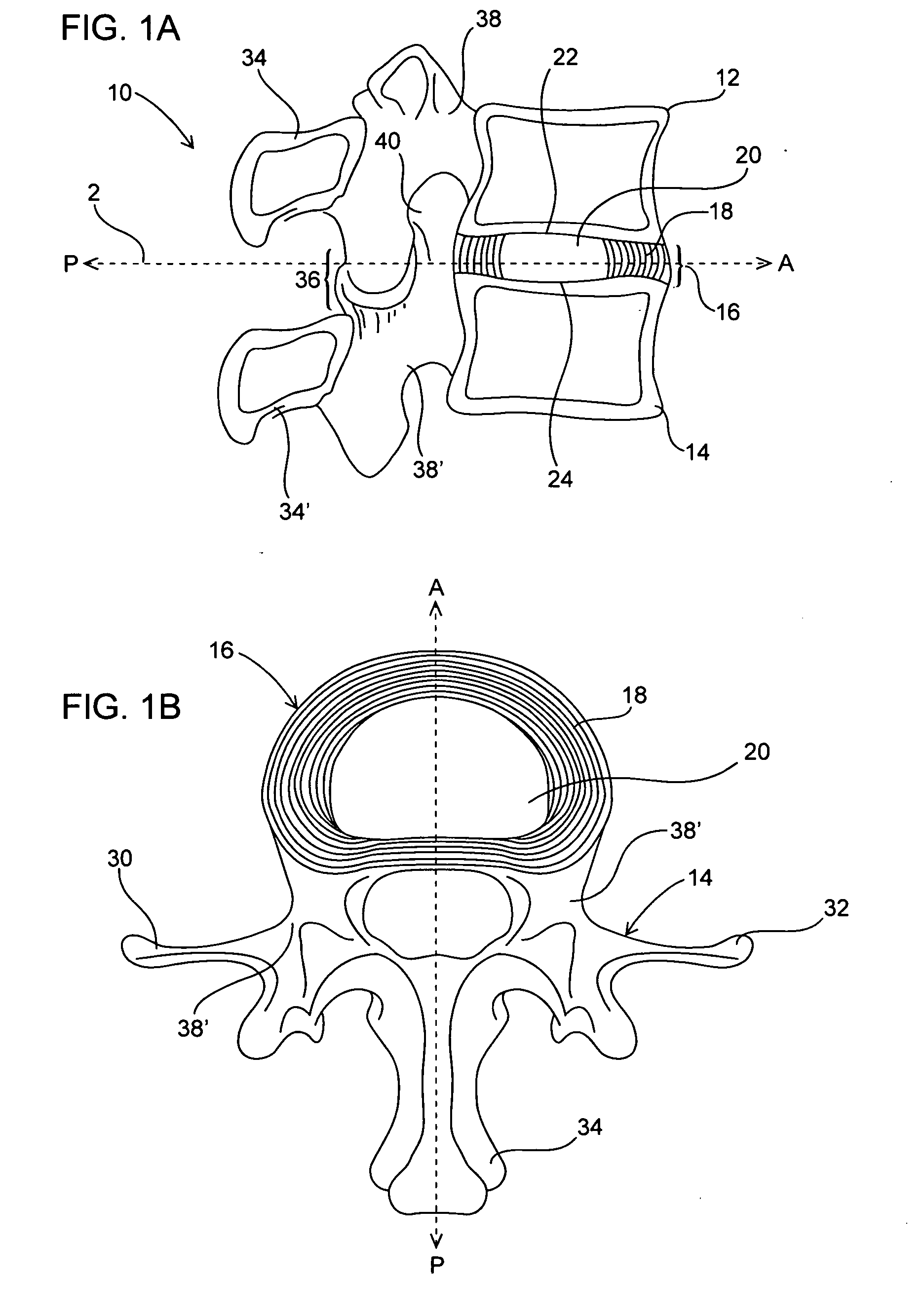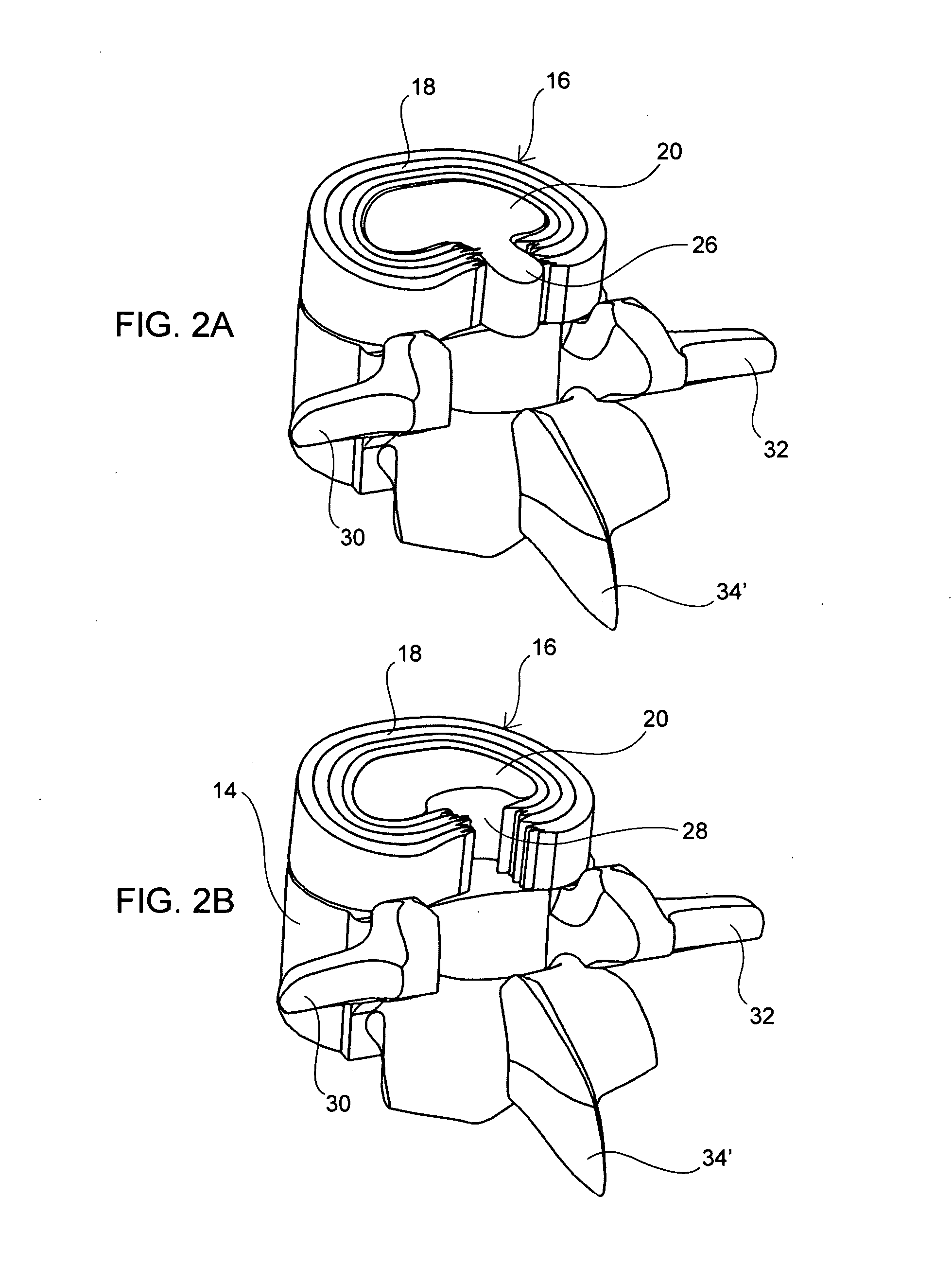Devices, systems and methods for augmenting intervertebral discs
a technology of intervertebral discs and devices, applied in the field of minimally invasive repair of intervertebral discs, can solve the problems of localized bulge or herniation, chemical irritation and inflammation of nerve roots, and particularly problematic posterior protrusions of intervertebral discs
- Summary
- Abstract
- Description
- Claims
- Application Information
AI Technical Summary
Benefits of technology
Problems solved by technology
Method used
Image
Examples
Embodiment Construction
[0083] Before the subject devices, systems and methods are described, it is to be understood that this invention is not limited to particular embodiments described, as such may, of course, vary. It is also to be understood that the terminology used herein is for the purpose of describing particular embodiments only, and is not intended to be limiting, since the scope of the present invention will be limited only by the appended claims.
[0084] Unless defined otherwise, all technical and scientific terms used herein have the same meaning as commonly understood by one of ordinary skill in the art to which this invention belongs. For example, in this description and the following claims, the terms “anterior”, “posterior”, “superior” and “inferior” are defined by their standard usage in anatomy, i.e., anterior is a direction toward the front (ventral) side of the body or spinal motion segment; posterior is a direction toward the back (dorsal) side of the body or functional spine unit; su...
PUM
 Login to View More
Login to View More Abstract
Description
Claims
Application Information
 Login to View More
Login to View More - R&D
- Intellectual Property
- Life Sciences
- Materials
- Tech Scout
- Unparalleled Data Quality
- Higher Quality Content
- 60% Fewer Hallucinations
Browse by: Latest US Patents, China's latest patents, Technical Efficacy Thesaurus, Application Domain, Technology Topic, Popular Technical Reports.
© 2025 PatSnap. All rights reserved.Legal|Privacy policy|Modern Slavery Act Transparency Statement|Sitemap|About US| Contact US: help@patsnap.com



